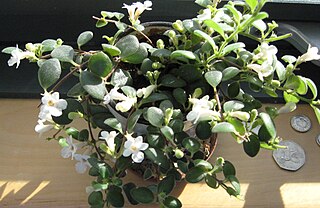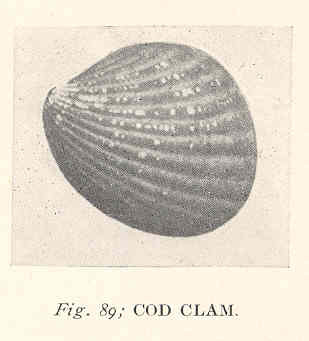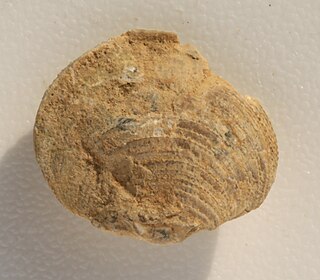
The symplast of a plant is the region enclosed by the cell membranes, within which water and solutes can diffuse freely. By contrast the apoplast is any fluid-filled space within the cell wall and extracellular space. Neighbouring cells are interconnected by microscopic channels known as plasmodesmata that traverse the cell walls. These channels, allow the flow of small molecules such as sugars, amino acids, and ions between cells. Larger molecules, including transcription factors and plant viruses, can also be transported through with the help of actin structures. The symplast allows direct cytoplasm-to-cytoplasm flow of water and other nutrients along concentration gradients. In particular, symplastic flow is used in the root systems to bring in nutrients from soil. Nutrient solutes move in this way through three skin layers of the roots: from cells of the epidermis, the outermost layer, through the cortex into the endodermis.

Cidaris is a genus of pencil sea urchins.

Chonetes is an extinct genus of brachiopods. It ranged from the Late Ordovician to the Middle Jurassic.
Kingena is an extinct genus of primarily Cretaceous-aged brachiopods of the family Kingenidae whose fossils are found in marine strata of Antarctica, Europe, and New Zealand. Early Paleocene-aged fossils from Denmark represent the youngest species.

Fritz Sittig Enno Werner von Hanstein nicknamed "Huschke von Hanstein", was a German racing driver who from the 1950s served both as Porsche's public relations manager and chief of their racing department.
Johannes Ludwig Emil Robert von Hanstein was a German botanist who was a native of Potsdam.
Maximilian Elisäus Alexander von Hanstein, Count of Pölzig and Beiersdorf was a Thuringian count. He was the stepfather of Albert, Prince Consort, and grandfather of Hans Poelzig.

Codonanthe is a genus of mainly epiphytic plants in the family Gesneriaceae, endemic to the Atlantic Forest of Brazil. The botanical name comes from the Ancient Greek for 'bellflower'. They have white or pale pink flowers and somewhat fleshy leaves. In 2013, the genus was reduced in size when more than half of the species were transferred to Codonanthopsis. They can be grown as houseplants, particularly in hanging baskets. Artificial crosses with Nematanthus hybrids have produced the hybrid genus × Codonatanthus.

Anomia is a genus of saltwater clams, marine bivalve mollusks in the family Anomiidae. They are commonly known as jingle shells because when a handful of them are shaken they make a jingling sound, though some are also known as saddle oysters.

Tivela is a genus of saltwater clams, marine bivalve molluscs in the subfamily Meretricinae of the family Veneridae, the Venus clams.

Camarotoechia is an extinct genus of brachiopods found in Paleozoic strata.

Cyclocardia is a genus of molluscs in the family Carditidae.

The Kimmswick Limestone is an Ordovician geologic formation in Arkansas, Illinois and Missouri. Fossils occurring in the Kimmswick include corals, bryozoans, brachiopods, conodonts, trilobites, crinoids and mollusks.
Calamophylliopsis is a genus of extinct stony corals. They lived from the Early Jurassic to Late Oligocene.

Cleiothyridina is an extinct genus of brachiopods.
Craniops is an extinct genus of brachiopods in the family Craniopsidae with species known from the Ordovocian to the Devonian.
Plicochonetes is an extinct genus of brachiopods in the extinct family Rugosochonetidae.
Douvillinella is an extinct genus of prehistoric brachiopods in the extinct family Douvillinidae. Species are from the Devonian of the Czech Republic and Germany. C. elegans is found only at Arauz Formation, Lezna Member, Palencia Province, North Spain.
Cubanothyris is an extinct genus of prehistoric brachiopods in the extinct family Angustothyrididae. Species are from the Triassic of China, the Russian Federation and Tajikistan. The type species, C. elegans, is found only at River Kuna.

Terebratulina is a genus of brachiopods belonging to the family Cancellothyrididae. The genus has a cosmopolitan distribution.
This page is based on this
Wikipedia article Text is available under the
CC BY-SA 4.0 license; additional terms may apply.
Images, videos and audio are available under their respective licenses.











